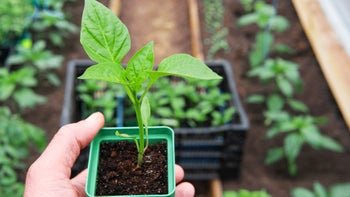
Is Maple Syrup Healthier Than Sugar? Here’s How They Compare
Key takeaways:
Maple syrup is a natural sweetener made from the sap of maple trees.
Maple syrup and white sugar are both forms of added sugar. But maple syrup provides vitamins, minerals, and antioxidants that white sugar doesn’t have.
Replacing white sugar with maple syrup may help stabilize blood sugar, decrease abdominal fat, and improve blood pressure.
The fact that maple syrup has some advantages over sugar doesn’t mean you should eat large amounts of it. Excess amounts of maple syrup can increase your risk of health conditions.
Table of contents

If you're trying to cut back on sugar, you might wonder whether it’s better to swap in natural sweeteners. Maple syrup, with its rich, brown color and unmistakable flavor, is sometimes promoted as a natural alternative to sugar. But is maple syrup better than sugar?
Read on to see how maple sugar compares to sugar, the nutritional differences between the two sweeteners, and which is better for your health.
What is maple syrup?
Maple syrup is a sweetener made from the sap of maple trees. Canada produces the most maple syrup in the world, followed by the U.S. Sap season is usually between March and May, leaving a short, once-a-year window to produce maple syrup.
Natural maple syrup is made from tapping sap from sugar maple trees. The watery sap is then concentrated and boiled. It takes about 10 gallons of sap to create just 33 ounces (about 2 lbs) of maple syrup. This may be why maple syrup has the nickname “liquid gold” in some parts of Canada.
Types of maple syrup
The International Maple Syrup Institute classifies maple syrup according to color and flavor:
Golden maple syrup has a light color and a delicate taste. It’s subtle and popular for pancakes, French toast, and waffles.
Amber maple syrup is a medium-gold color with a rich flavor. This type of maple syrup is the most versatile. It works well as a breakfast topping, or in sauces and dressings.
Dark maple syrup is a rich, brown color with a robust maple flavor. This stronger syrup is great for cooking and baking. Some people use it to replace regular sugar in batter.
Very dark maple syrup can be almost black in color. Chefs who want a strong maple flavor may use this syrup when grilling or roasting meats, for example.
Natural sugars: Natural sugars like agave, molasses, and honey can be helpful replacements for table sugar. Learn the pros and cons of each.
Is honey healthier than sugar? Like white sugar, honey is an added sugar that you should limit in your diet. But honey has some health advantages over sugar.
Is natural sugar better than refined sugar? Yes. Natural sugar is better for you, since foods that contain it also provide nutrients that can benefit your health.
Is maple syrup better than sugar?
Yes, slightly. Both are forms of added sugar, and both are pure carbohydrate (sugar). The two sweeteners have a very similar number of calories. But maple syrup has a few nutritional advantages over table sugar.
Contains some vitamins and minerals
Maple syrup contains vitamins and minerals. For most of them, the amount is small. But maple syrup contains a good dose of:
Vitamin B2 (which supports metabolism)
The mineral manganese (which supports bone health)
Read more like this
Explore these related articles, suggested for readers like you.
White sugar contains no vitamins or minerals.
Provides antioxidants
Maple syrup provides lignans and polyphenols, which are two types of antioxidants. Antioxidants are nutrients that help protect your body’s cells from damage. This damage can increase your risk for chronic conditions, including:
Type 2 diabetes
Cancer
Heart disease
Excess weight
Neurological disorders like Alzheimer’s disease and Parkinson’s disease
Getting antioxidants in your diet from many different foods can benefit your health.
May support gut health
Maple syrup contains inulin, a helpful prebiotic fiber that acts as fuel for the probiotics (good bacteria) living in your gut.
Better for blood sugar
Maple syrup has a lower glycemic index (GI) than regular sugar:
This means that for similar amounts, maple syrup doesn’t raise your blood sugar as much as sugar does. Foods with a lower GI are better for you than those with a higher GI, especially if you have diabetes or prediabetes.
Researchers actually looked into maple syrup’s impact on blood sugar. In one study, 42 adults with a larger body size swapped 5% percent of their total calorie intake from sugar. Instead, they used either maple syrup or an artificially flavored sucrose syrup for 8 weeks.
The researchers found that replacing sugar with maple syrup:
Led to a slower rise in blood sugar
Decreased abdominal fat mass (fat around the midsection)
Improved blood pressure
Reduced the number of harmful bacteria in the gut
Note that this study was partially funded by Québec Maple Syrup Producers. That doesn’t mean the results are untrue. But it does mean there’s some risk that results could be biased. And this is just one small study. More studies are needed before dietary recommendations can be made.
Is it OK to eat maple syrup every day?
Yes. All types of added sugars, including maple syrup, are OK to eat in small amounts. But keep in mind that added sugars can harm your health when consumed in excess. The World Health Organization (WHO) recommends limiting added sugars to no more than 12 tsp (48 g) per day.
Eating more than this amount of added sugar is linked to an increased risk of:
Weight gain
High cholesterol
Type 2 diabetes
Heart disease
Cancer
Depression
Cognitive impairment
Remember that added sugar isn’t found only in cookies, cake, and sugary drinks. Added sugar goes by many different names. And it’s added to condiments, yogurt, and protein bars, along with many other packaged foods.
Aim to have less than 12 tsp of added sugars each day from all sources combined.
Nutritional breakdown of maple syrup
Here’s the nutrition information for 1 tablespoon (20 g) of maple syrup compared to 1 tablespoon of white sugar:
Maple syrup (1 tbsp) | White sugar (1 tbsp) | |
Calories | 54 kcal | 48 kcal |
Fat | 0 g | 0 g |
Carbohydrates | 14 g | 12 g |
Sugar | 12 g | 12 g |
Protein | 0 g | 0 g |
Sodium | 2 mg | 0 mg |
Calcium | 2% DV | 0% DV |
Potassium | 1% DV | 0% DV |
Magnesium | 1% DV | 0% DV |
Zinc | 1% DV | 0% DV |
Vitamin B2 | 20% DV | 0% DV |
Manganese | 20% DV | 0% DV |
* Percentages are based on the percent daily value, or how much of a nutrient you’re recommended to eat per day.
What should you look for when choosing a maple syrup?
You can choose golden, amber, dark, or very dark maple syrup, depending on your taste preference. Darker syrups contain more antioxidants than lighter syrups. Otherwise, the nutritional value is similar for all types of maple syrup.
Be sure to look for the words “real maple syrup” on the bottle. And read the ingredient list. Real maple syrup is made from just one ingredient: maple syrup. Other syrups may be shelved nearby at the grocery store, but they aren’t pure maple syrup. They may go by the names:
Breakfast syrup
Pancake syrup
Maple-flavored syrup
These syrups are made from high-fructose corn syrup or cane sugar, water, and artificial color and flavor. They have no health benefits.
The bottom line
Both maple syrup and white sugar are types of added sugars. But maple syrup has some nutritional advantages over sugar. It provides a small amount of vitamins, minerals, and antioxidants. It may also benefit gut health. And it doesn’t raise your blood sugar as much as white sugar does. This makes maple syrup slightly better for your health than white sugar. Enjoy it in moderation as you would with any sweetener.
Why trust our experts?



References
International Maple Syrup Institute. (n.d.). Nutrition and grading.
Mohammed, F., et al. (2022). Chemical composition and mineralogical residence of maple syrup: A comprehensive review. Food Chemistry.
Mohammed, F., et al. (2023). Nutritional, pharmacological, and sensory properties of maple syrup: A comprehensive review. Heliyon.
Morissette, A., et al. (2024). Substituting refined sugars with maple syrup decreases key cardiometabolic risk factors in individuals with mild metabolic alterations: A randomized, double-blind, controlled crossover trial. Journal of Nutrition.
My Food Data. (n.d.). Sugar white granulated or lump.
My Food Data. (n.d.). Syrup, maple, Canadian.
Office of Dietary Supplements. (2021). Manganese. National Institutes of Health.
Québec Maple Syrup Producers. (n.d.). Major breakthrough in maple syrup research.
Québec Maple Syrup Producers. (n.d.). Step-by-step in the production of maple syrup.
Rippe, J. M., et al. (2016). Relationship between added sugars consumption and chronic disease risk factors: Current understanding. Nutrients.
Saraiva, A., et al. (2022). Maple syrup: Chemical analysis and nutritional profile, health impacts, safety and quality control, and food industry applications. International Journal of Environmental Research and Public Health.
St-Pierre, P., et al. (2014). Comparative analysis of maple syrup to other natural sweeteners and evaluation of their metabolic responses in healthy rats. Journal of Functional Foods.
Sugar Nutrition Research Center. (n.d.). Glycemic index and glycemic load.
World Health Organization. (2015). Guideline: Sugars intake for adults and children.
World Population Review. (n.d.). Maple syrup production by country 2024.





























